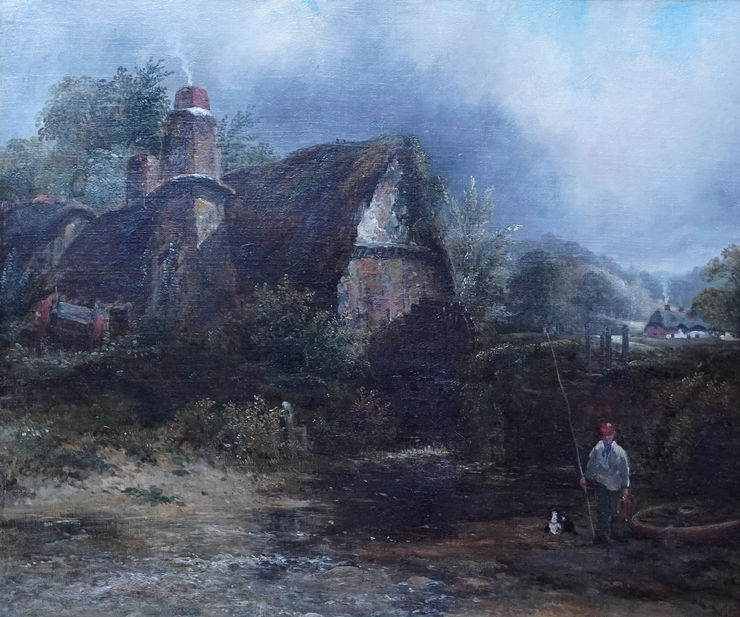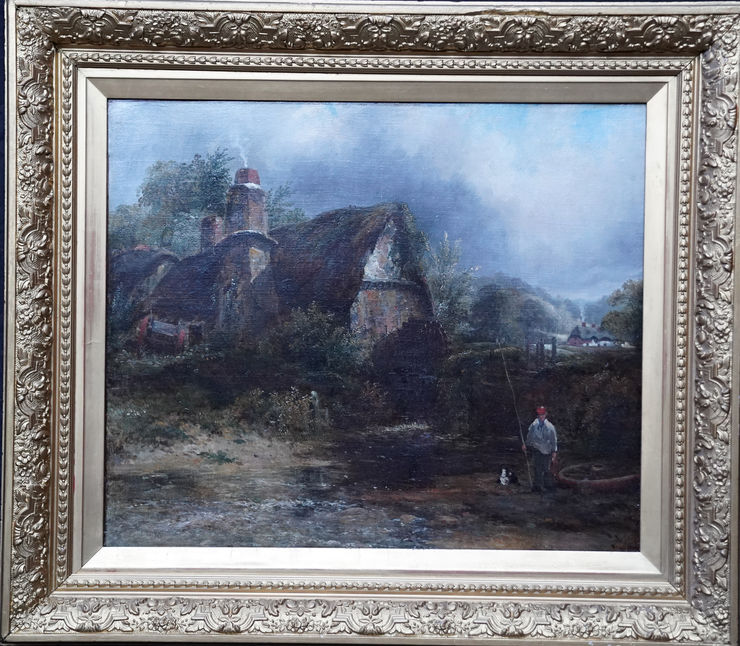Frederick Waters Watts (1800-1862)
| Artist Name | Frederick Waters Watts (1800-1862) |
|---|---|
| Title | Dedham Watermill |
| Description | Oil on canvas circa 1850 by Frederick Waters Watts (1800-1862) who is a highly desired landscape painter from the19th century. The painting titled "Dedham Watermill" is in the heart of what is now known as Constable country. It is no coincidence that he painted this location and he has often been mixed up with Constable. They both painted in a similar style and both painted at Dedham and Hampstead, London. Constable went on to achieve worldwide fame and his works are housed in every major National Art Gallery. However Frederick Waters Watts works are stunning in their own right and can be purchased for a fraction of a Constable. His works are also held in public collections including The Tate and the Victoria and Albert Museum. He is a well listed British artist and who exhibited widely at the exhibitions including The Royal Academy and at the major British art institutions. The painting depicts the Mill at Dedham with a fisherman wading through a shimmering stream holding his catch with his companion by his side. The watermill in the foreground and the cottage with a plume of smoke in the distance are captured under a silvery grey sky. It is a lovely painting housed in a gilt gallery frame. |
| Provenance | J A Cooling Gallery 92 New Bond Street London. |
| Medium | Oil on Canvas |
| Size | 24 x 20 inches |
| Frame | Framed gallery frame 32 inches by 28 inches, in good condition. |
| Biography | Frederick William Watts' early years have always been something of a mystery. It is thought that he was born in Bath, 7th October 1800 and baptised the following year in St. Albans as William Watts. It is most probable he enrolled in the RA Schools in 1817 as William Watts subsequently changing his name to Frederick William Watts to avoid confusion with the landscape painter, William Watts (1752-1851). He was awarded Silver Medals at the RA School 1819-1821 and exhibited at the London Royal Academy from 1821 until 1862. Watts also exhibited at the British Institution, Suffolk Street Galleries and at the New Watercolour Society. Watts lived in Hampstead from 1821, where John Constable (1776-1837) also lived, and, some twenty-five years older, was to have a marked influence on Watts’s style. Although it is not known that they ever met, Watts would undoubtedly have been familiar with his work and Hampstead was a relatively small town. Watts painted landscapes throughout England and Wales, visiting north and south Wales, Derbyshire, Devon, Isle of Wight, Sussex and, of course, Suffolk and Essex. He painted many views around what is now north London and Middlesex and views on the Thames. Watts was highly successful in his portrayal of the English landscape and widely collected in his lifetime and throughout the twentieth century in Britain, Europe and North America. His work can be found in: London, Victoria and Albert Museum and The Tate. |
| Price | £7500 |

